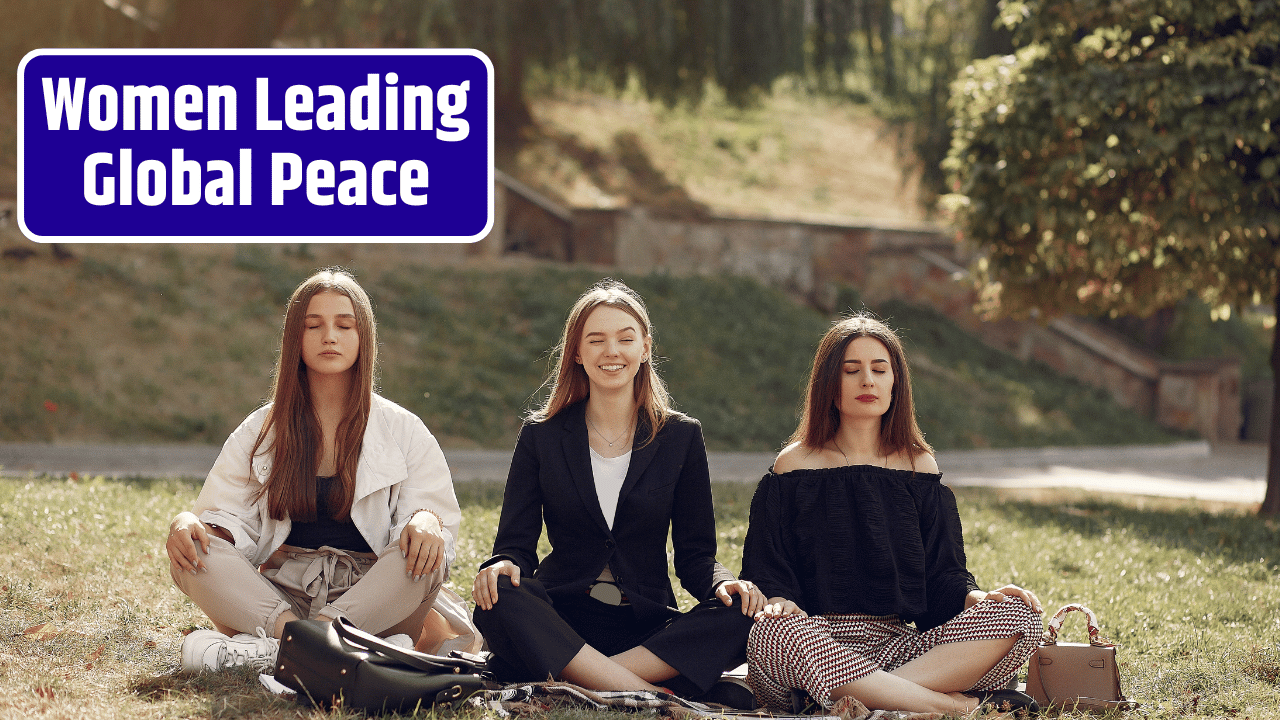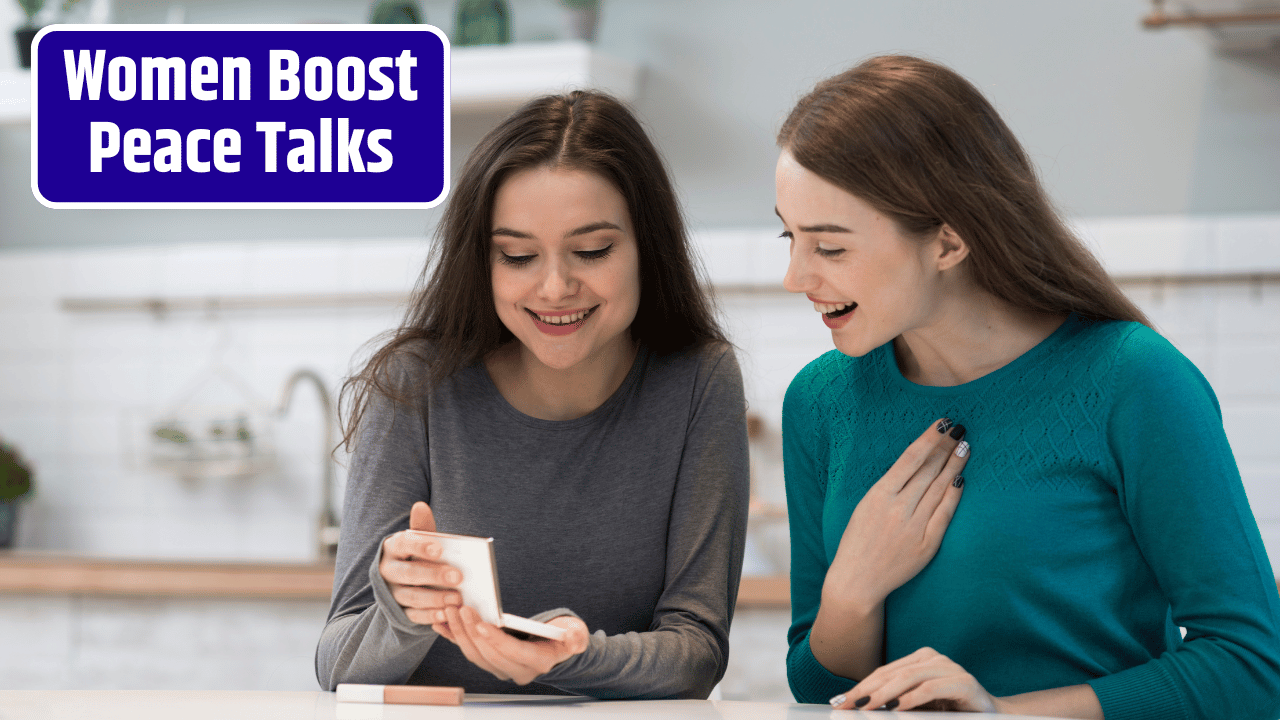Let’s get one thing straight right off the bat: women have always been peacemakers. In families, in communities, on the frontlines of revolutions—they’ve been patching up the world while history books gave credit to men with microphones.
But now? Now, the silence is breaking. Women aren’t just organizing from the sidelines anymore. They’re grabbing the mic, stepping into boardrooms, negotiating with warlords, and rewriting the rules of diplomacy. And here’s the kicker—they’re damn good at it.
Table of Contents
The Power of Showing Up (Even When Uninvited)
Across the globe, women are redefining what peacebuilding looks like. Not with press conferences or photo ops, but with community healing circles in Rwanda, kitchen-table negotiations in Colombia, and grassroots diplomacy in Syria.
Let me paint a picture.
In Liberia, during the Second Civil War, women came together under a movement called Women of Liberia Mass Action for Peace. They wore white. They sat in protest. They refused to leave. And they didn’t just demand peace—they demanded a seat at the negotiation table. The result? A peace agreement in 2003 and the election of Africa’s first female head of state, Ellen Johnson Sirleaf.
Think about that. Women—many of whom had never even voted—ended a war. Not with weapons, but with persistence and presence.
Why Female Peacebuilders Matter (And Why It’s Not Just “Nice”)
This isn’t about inclusion for inclusion’s sake. This is strategy.
Stat after stat shows us: when women are involved in peace processes, the chances of lasting peace skyrocket. According to UN data, peace agreements that include women are 35% more likely to last at least 15 years.
Why? Because women tend to prioritize community needs, reconciliation, and long-term recovery. They bring in perspectives that are often ignored—like sexual violence, displaced families, education, and food security. Basically, they see the bigger picture. The human picture.
Men negotiate power. Women, often, negotiate survival.
The Barriers (Because of Course There Are Barriers)
So, what’s stopping this from becoming the norm?
Well, take your pick: cultural taboos, systemic patriarchy, lack of funding, security threats, being dismissed as “too emotional,” or literally being banned from entering political spaces. In many conflict zones, women still need permission from their husbands just to attend a peace dialogue.
And when they do speak up? They’re often labeled as troublemakers or sidelined into “women’s issues”—as if peace isn’t everyone’s issue.
Here’s a harsh truth: global peace talks still overwhelmingly look like exclusive men’s clubs. The 2023 UN Women report showed that only 19% of peace agreement signatories were women. That’s it. One-nine.
Stories That Demand Attention
Let’s talk names and places.
Colombia: The 2016 peace agreement with FARC was one of the most gender-inclusive in history. Women played a crucial role not just in negotiations, but in writing the actual language of the deal—ensuring that survivors of sexual violence had protections and reparations.
Northern Ireland: The Women’s Coalition emerged in the 1990s when sectarian violence was tearing communities apart. While the men argued over power-sharing, the women focused on schools, mental health, and rebuilding trust.
Afghanistan: Even under Taliban rule, women-led underground schools kept education alive for girls. Risking their lives, they taught by candlelight. Today, despite exile and oppression, Afghan women continue to lead from the shadows—organizing online, documenting abuses, keeping the flame lit.
This isn’t just bravery—it’s leadership.
Reimagining Peace From the Ground Up
Here’s where it gets interesting. Women aren’t just trying to join traditional peacebuilding. They’re reinventing it.
Take intersectional peacebuilding—an approach that recognizes how gender, race, class, and identity overlap in conflict. Female leaders are pushing for models that don’t just aim to stop violence, but to dismantle the root causes of inequality.
In Kenya, women’s groups are mediating tribal tensions through storytelling and cultural exchange. In Palestine and Israel, “Women Wage Peace” brings together mothers from both sides, united in their grief and determination to end the cycle.
They’re doing what governments and armies have failed to do: humanizing the other side.
The Bottom Line: No Peace Without Women
Let’s stop acting like this is a side quest. Women aren’t the cherry on top of diplomacy—they’re the secret sauce. The spine. The storytellers and the strategists.
Want peace that lasts? That actually heals communities? Then fund women’s organizations. Protect female peacebuilders. And for god’s sake—give them the mic.
FAQs
Why are women underrepresented in peace negotiations?
Because of longstanding systemic biases. Cultural norms, lack of access to education and funding, and threats to their safety all play a role. Often, peace processes are designed by and for male elites.
Is there evidence that women improve peace outcomes?
Yep. Studies by the UN and the Council on Foreign Relations show peace agreements with female participation are more durable and address broader societal needs.
Are women-only peace movements effective?
Absolutely. From Liberia to Northern Ireland, women-led groups have forced major breakthroughs when formal systems failed.
What’s needed to support women peacebuilders?
Political will, funding, security protections, and a shift in global mindset—recognizing that women’s voices aren’t optional, they’re essential.














